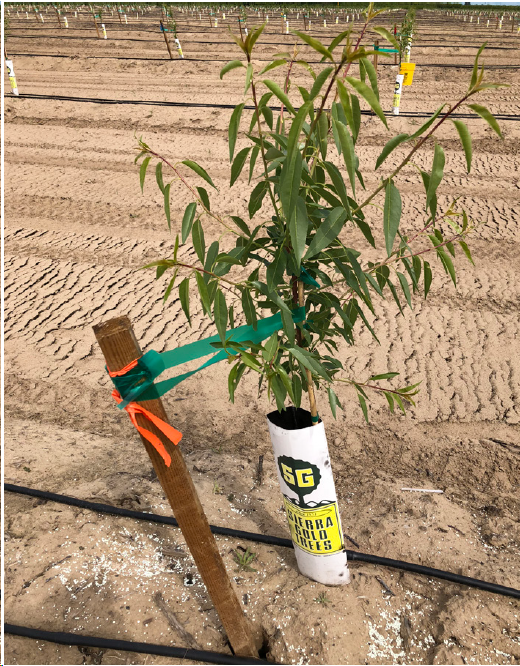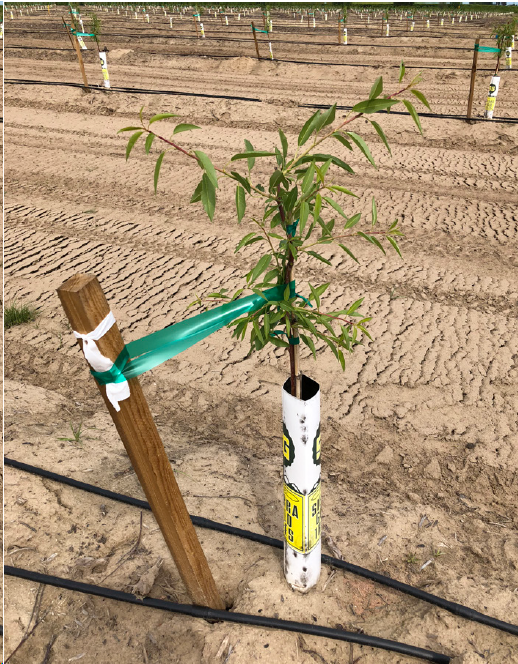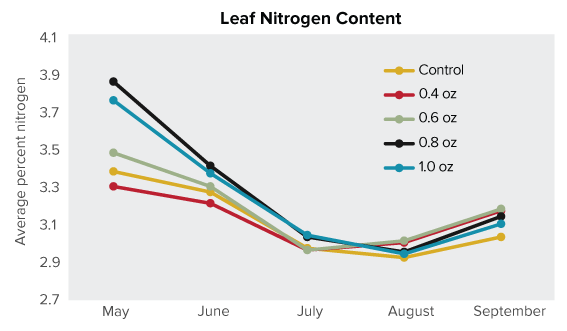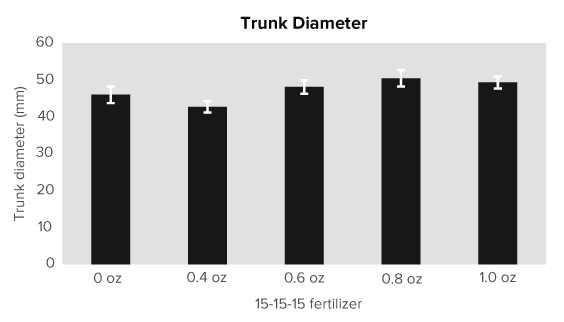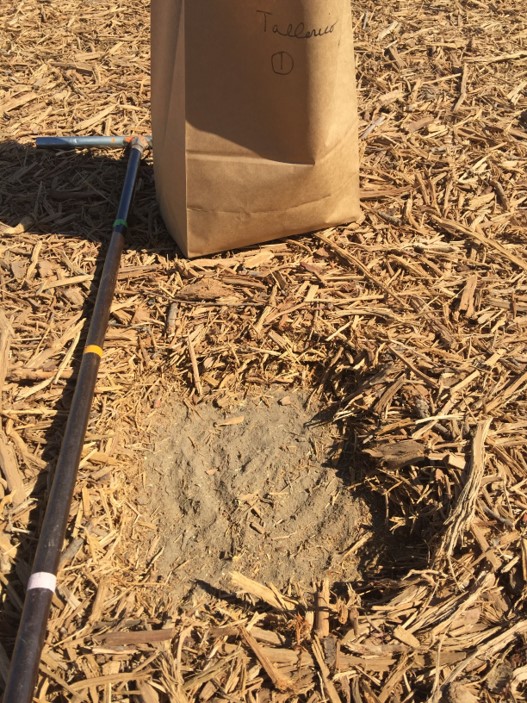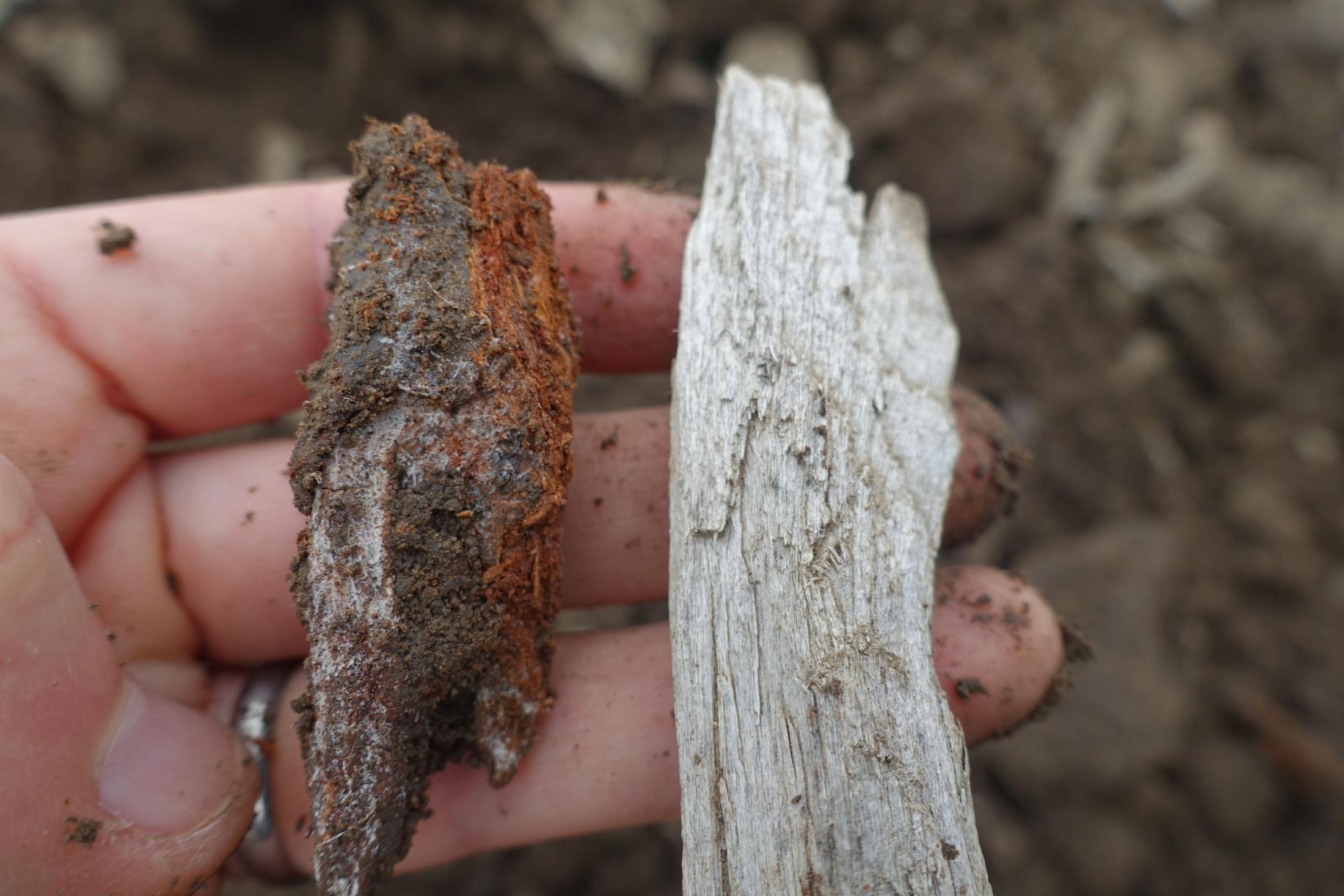
When an orchard is recycled, approximately 30 to 60 tons of wood chips, containing 15 to 30 tons of organic carbon, are returned to each acre of orchard soil. Research has shown that there are benefits to this large volume of carbon: improved soil physical, chemical, and microbiological properties, increased water holding capacity and infiltration, and improved tree water status.
However, the large volume of organic carbon incorporated into an orchard can significantly increase the carbon-to-nitrogen (C:N) ratio in soils. A high C:N ratio can cause soil microbes to immobilize any nitrogen available in the soils in order to balance out their sudden increase in carbon consumption. This can result in a temporary deficit of nitrogen available for trees subsequently planted in the orchard.
Over time, however, as wood chips decompose, they return nutrients to the soil. Organic matter decomposition in soil can provide nitrogen, phosphorus, calcium, sulfur, and other minor nutrients needed for crop nutrition. Phosphorus from organic amendments binds quickly to soil minerals and moves very little from where it is placed. Potassium, calcium, and magnesium are relatively soluble when obtained from soil organic matter. Organic matter can also provide a balanced source of many minor elements needed for tree growth.
How should growers best manage these dynamics in their recycled orchards? With increasing numbers of California growers using whole orchard recycling (WOR), UC researchers are evaluating the impacts of WOR on nitrogen dynamics in subsequent second-generation orchards. Initial results and observations are reported here; additional research in nitrogen and nutrient management following WOR is ongoing, and results will be reported as they become available.
How does whole orchard recycling impact orchard nutrient management?
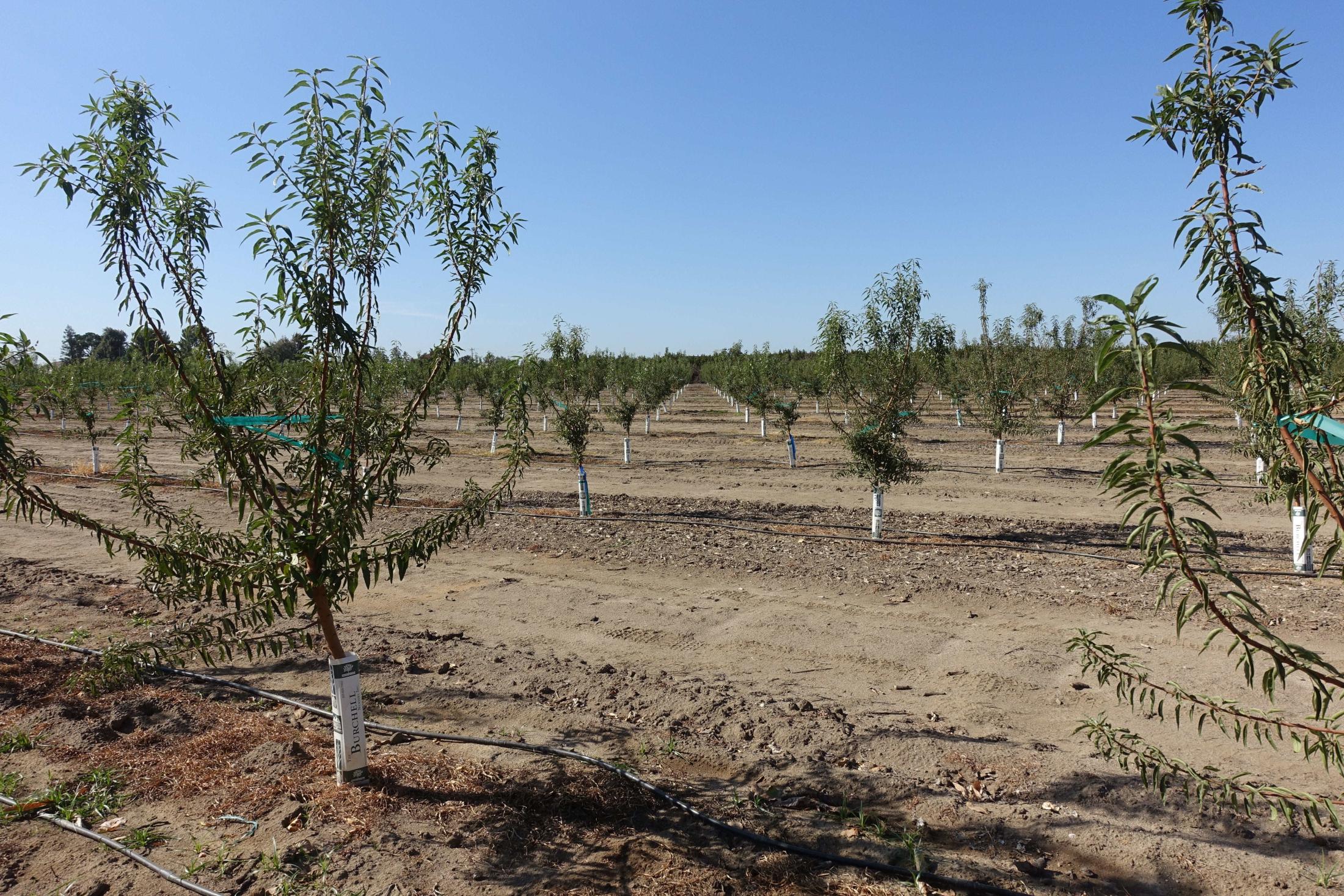
Recommendations for nitrogen application for first-year almond trees may need to be reconsidered for orchards established following WOR. Observations from WOR trials showed the following:
- Reduced shoot growth in second-generation orchards was observed in early spring after replanting, likely as a consequence of a greater C:N ratio in the soil.
- Trees responded well to the application of additional nitrogen in the first year following WOR, with greater shoot growth, trunk diameters, and leaf tissue nitrogen levels.
- WOR trial plots in this study did not require additional nitrogen in the second year to achieve expected tree growth.
- A previous study in 2004 showed that, without any nitrogen fertilizer, almond trees growing in wood-chip-amended soils exceeded the growth rate and leaf petiole nutrient levels of trees growing in non-amended soils by the third year after planting. In the context of current and ongoing WOR research, these results suggest a potential for growers who incorporate wood chips into their orchard soils to reduce fertilizer inputs without sacrificing tree health or development.
Additional UC research is ongoing (as of 2019) to better understand aspects of nutrient management for WOR.
